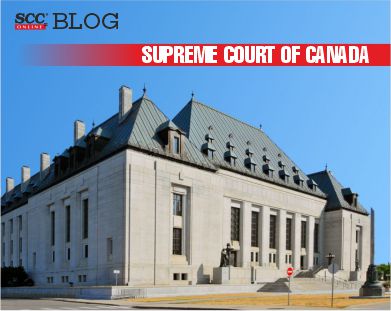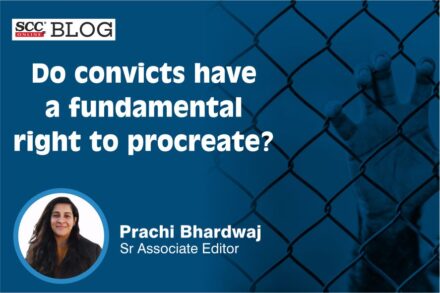Supreme Court of Canada: While deciding the instant matter concerning patent infringement by Nova Chemicals Corporation, wherein the issues were that whether theoretical profits that infringer could have earned by selling unrelated product, can be considered as non-infringing option in calculation of profits that infringer must disgorge and, whether the patentee is entitled to springboard profits; the Court with a ratio of 8:1, held that when a patentee chooses an accounting of profits as a remedy for patent infringement, the infringer must disgorge all the profits they gained that are causally attributable to the invention. This may involve consideration of the hypothetical profits that an infringer could have earned by selling a non-infringing option. Springboard profits may also be available.
The majority decision was rendered by Wagner C.J. and Moldaver, Karakatsanis, Brown, Rowe*, Martin, Kasirer and Jamal JJ., whereas Côté J., dissented.
Facts and Legal Trajectory: Nova and Dow are competitors in the plastics industry. In 1994, Dow filed a patent for new plastics (“patented plastics”). The patented plastics were metallocene linear low-density polyethylenes that had superior strength and processability characteristics as compared to conventional linear low-density polyethylenes. Dow’s patent was issued in 2006 and expired in 2014.
Nova made and sold products covered by Dow’s patent for metallocene linear low-density polyethylenes, thereby inviting legal proceedings by Dow for patent infringement.
The Federal Court permitted Dow to seek an accounting of profits to be assessed by reference. The Reference Judge awarded Dow a sum equal to Nova’s actual revenue from selling the patented plastics minus its actual full costs associated with producing the patented plastics. Accordingly, Nova was only permitted to subtract its actual cost of producing ethylene, the main ingredient in the patented plastics, not the higher market price of ethylene. The reference judge also concluded that Dow was entitled to “springboard profits”.
The Federal Court of Appeal upheld the entirety of the award to Dow.
*Springboard Profits are profits that arise post-patent-expiry but that are causally attributable to infringement of the invention during the period of patent protection.
Majority’s Assessment and Decision: The majority observed that the instant appeal only concerns the remedy as given by the lower courts and that whether they erred in calculating infringer’s profits under accounting of profits.
The majority made the following assessment-
-
An accounting of profits is sometimes presented as a choice between the (1) differential costs, (2) full costs, and (3) differential profits approaches. It is more appropriate to conceptualize an accounting of profits as a three-step test: Step 1– the Court should calculate the actual profits earned by selling the infringing product i.e., revenue minus (full or differential) costs; Step 2– the Court should determine whether there is a non-infringing option that can help isolate the profits causally attributable to the invention from the portion of the infringer’s profits not causally attributable to the invention, i.e., differential profits and Step 3– if there is a non-infringing option, the Court should subtract the profits the infringer could have made had it used the non-infringing option from its actual profits, to determine the amount to be disgorged.
-
Whether there exists a non-infringing option, is a question of fact. There are no strict rules around this factual exercise, and the non-infringing option need not be a strict market substitute for the patented product. The onus is on the infringer to adduce sufficient evidence to satisfy the court that the profits from its infringing product arose by virtue of features other than the patentee’s invention and that there is a non-infringing option that can help the courts isolate this value.
-
Springboard profits are legally permissible. An accounting of profits requires that the infringer disgorge all profits causally attributable to infringement of the invention, regardless of when the profits materialize, including profits an infringer earns because of an accelerated entry into the market.
-
A patent provides a time-limited monopoly to make, use, and sell an invention during the life of the patent. This monopoly gives the patentee the right to build sales capacity and market share without any market competition. The patentee can then use this market advantage against competitors after the patent expires. An infringer that begins selling a patented invention before the patent expires can build sales capacity and market share for their own version of the patented product. Then, after the patent expires, the infringer can use this sales capacity and market share to earn profits. A portion of such post-expiry profits may be causally attributable to infringement of the invention. Failing to disgorge those profits would leave gains that are causally attributable to infringement of the invention in the hands of the infringer and would be unfair to third parties that waited for patent expiry to compete with the patentee.
-
The Majority held that, the Reference Judge did not err in refusing to deduct the market price of ethylene as a cost that Nova incurred by making the patented plastics. Nor did the reference judge err when he concluded that all the profits Nova earned by selling the patented plastics were causally attributable to Dow’s invention.
-
The Majority pointed out that the Reference Judge’s findings were supported by two facts- Firstly, customers only purchased Nova’s infringing plastics because they contained the features captured by Dow’s patent. Secondly, Nova did not establish that there were relevant non-infringing options that would help the Court isolate the profits causally attributable to Dow’s invention from profits attributable to non-inventive features of the infringing product.
-
The Majority refused to interfere with the decision to award springboard profits to Dow because, by infringing Dow’s patent, Nova entered the market created earlier by the invention, built a market share, and used that market advantage to earn profits post-patent-expiry that were causally attributable to infringement of the invention, during the period of patent protection.
-
The appeal by Nova was thus dismissed.
Dissenting Opinion: Côté J., while expressing his dissent stated that Nova’s appeal should have been allowed. He pointed out that-
-
An accounting of profits, which focuses on the wrongdoer’s gains, seeks to restore the wrongdoer to the position it would have been in but for its wrongdoing. “But for” causation is therefore appropriate, as the focus is on restoring the wrongdoer to the position it would have occupied but for its wrongdoing.
-
While an accounting of profits can have a deterrent purpose in the patent context, the primary purpose of the remedy in this context is restorative. As in other contexts, a causal relationship between the infringement and the profits is required, but, in the patent context, there is an acute focus on causation. The differential profit approach is the preferred approach in this context because it best approximates the causal contribution of the infringement. It isolates the value of the patent in the hands of the infringer by comparing the infringer’s actual profits with the profits that the infringer could have and would have earned but for the infringement.
-
Under the differential profits approach, a non-infringing option does not have to be a true consumer substitute for the patented product.
-
Courts must determine the appropriate hypothetical “best non-infringing option” to be used, based on what an infringer could have and would have done but for the infringement. An examination of what the infringer could havedone involves an objective assessment of what was feasible in the circumstances. While an examination of what the infringer would have done involves a more subjective assessment of its alternative course of conduct.
-
The Dissenting Judge pointed out that whether a non-infringing option exists or not, cannot be a question of fact alone. It must be a question of mixed fact and law.
-
It was stated that preventing a comparison between Nova’s actual profits and its hypothetical profits had it not infringed, was a distorted causation analysis and forced Nova to disgorge millions of dollars in profits that have not been shown to be causally attributable to its infringement of Dow’s patent.
-
Dow should be entitled to an accounting of all profits that Nova earned as a result of its infringement, including springboard profits. The causation analysis for any post-expiry period should be based on the same hypothetical “but for” reasoning embodied in the differential profit approach. The application of the differential profit approach and the calculation of springboard profits should be remitted to the Federal Court.
[Nova Chemicals Corp. v. Dow Chemical Co., 2022 SCC OnLine Can SC 34, decided on 18-11-2022]
*Sucheta Sarkar, Editorial Assistant has prepared this brief.







